Vagrancy is a term used to describe the behaviour of an animal that appears outside of its normal range or migration route. This can be caused by a number of factors, including weather conditions while navigating. Our expert guide to wildlife vagrants in the UK reveals some of the species that have turned up and when, and what happened to them next.
Birders and other naturalists may twitch these vagrant species and travel to see them, sometimes across very long distances, particularly when the animal is an especially rare sighting for the UK (usually described as a “mega” by twitchers).
Common winter damselfly (Sympecma fusca)
Location: Southampton
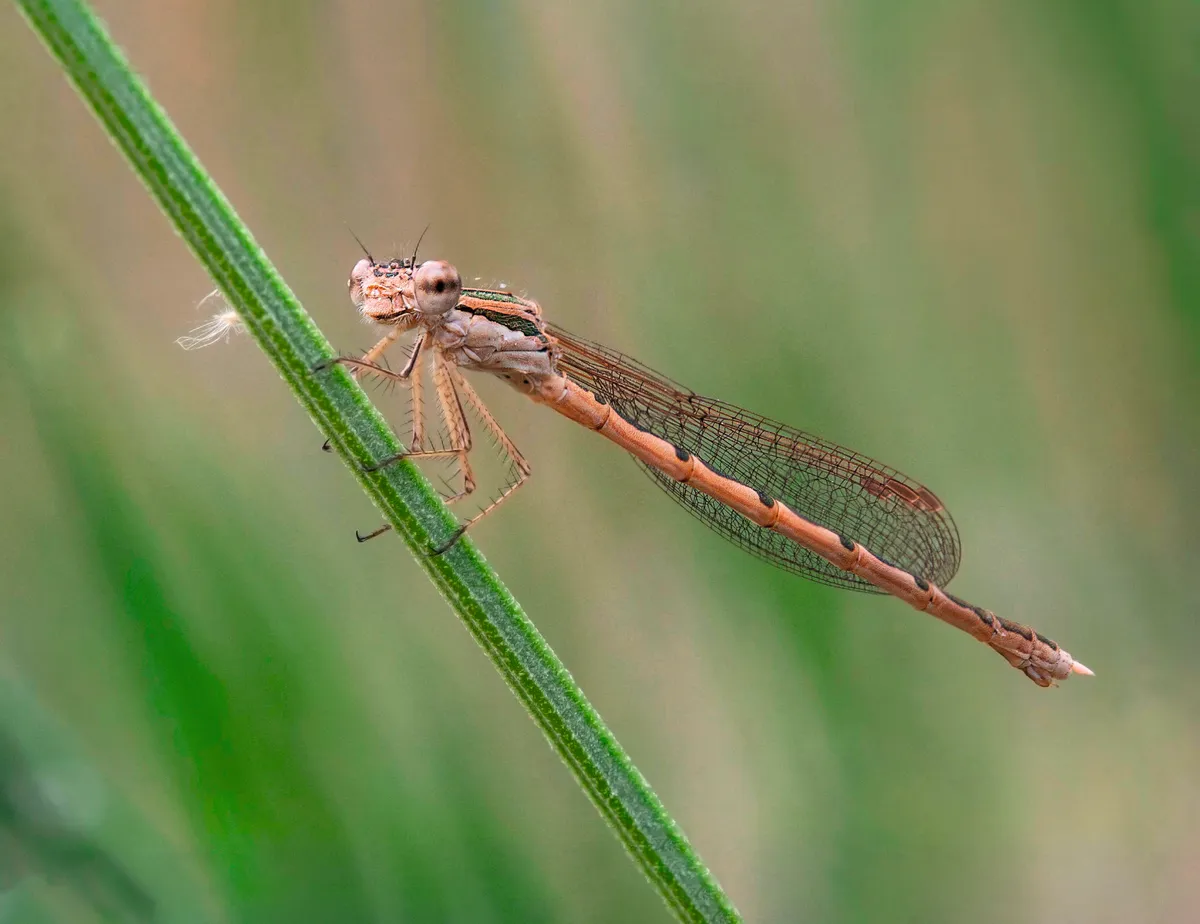
When local wildlife enthusiast Terry Crow posted pictures online in May of an apparent common blue damselfly he’d seen near Southampton, he couldn’t have expected what was to come.
His subject was reidentified as a female common winter damselfly – potentially only the second British record following one found inside a house in South Wales in 2009 and a presumed vagrant that may have come from somewhere along the French coast.
The species, like the similar Siberian winter damselfly, overwinters in its adult form, hence its name. Its geographical range includes northern Africa, southern and central Europe, and western Asia.
It has occurred (and possibly bred) on the Channel Islands and has been tipped as a potential UK colonist, expected to follow in the footsteps of others such as the southern and willow emeralds, and the small red-eyed damselfly – the latter two are now common and widespread in southern England.
Rarer damselflies are easily overlooked, being small and similar in appearance to commoner congeners. Once a new colonist species is on the radar for enthusiasts, other colonies are often quickly discovered, although it’s too early to say whether that’s what’s likely to happen here.
This individual could be an exceptionally rare visitor doomed never again to see its own kind, part of an undiscovered colony, or it may become a colony founder itself if it can find a mate.
This occurrence highlights how social media and the internet has revolutionised the discovery of those lost – or perhaps not so lost – rare visitors to our shores.
Black-browed albatross (Thalassarche melanophris)
Location: Bempton Cliffs, Yorkshire
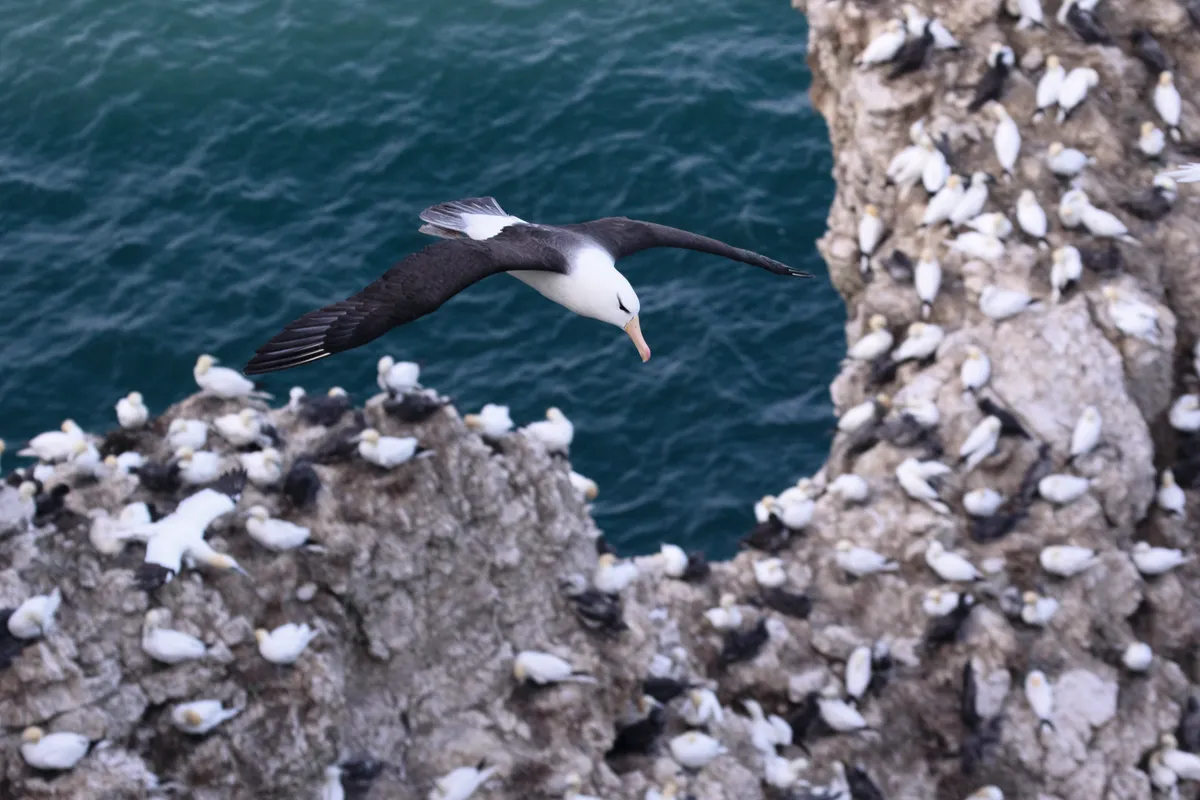
There’s something iconic about those record-breaking ocean wanderers, the albatrosses.
Many disperse north from the southern oceans to the tropics in winter and one species, the black-browed, occasionally shows up on British coasts during land-based seawatches, often in inclement weather, yet otherwise highly unpredictable and rarely seen on more than two or three occasions in any one year.
Usually notoriously difficult to catch up with, some individuals have summered in isolated island gannet colonies over the years, inspiring only the intrepid to visit. But in recent years one bird has been roaming the North Sea.
Initially spending its summers on the German coast, it visited the English east coast to flirt with the gannetry at Bempton Cliffs, Yorkshire, with odd flybys and sometimes a quick rest on the cliff face.
It was only during 2021 that it decided to make these very cliffs its temporary home. Visitor numbers swelled last summer as birders sought out this rare sight in the UK.
The albatross, blissfully unaware of the fuss it was causing, could be unpredictable, disappearing out to sea often for days at a time. But when in residence it would effortlessly ride the thermals among the gannets, wowing the crowds, sometimes metres away.
When a little bit of the Southern Ocean arrived in Britain last year, it seemed almost rude not to go and pay homage.
And the good news is that though the albatross left in September 2021 as expected, it returned in late March 2022 for another season of, well frankly, showing off – giving people a second chance to see it glide.
Egyptian vulture (Neophron percnopterus)
Location: Lincolnshire, Isles of Scilly and County Roscommon

Following sightings in Lincolnshire (May 2021) and the Isles of Scilly (June 2021), an adult Egyptian vulture resurfaced in Ireland last summer.
Nomadic, unpredictable, and sometimes missing for months at a time, the bird was eventually rediscovered in 2021/2022 winter settled in County Roscommon, Ireland, using an innocuous looking belt of trees for roosting and visiting a nearby sheep carcass for food (at least until it was removed).
The species has occurred in Britain at least on a handful of occasions before. Some involving escapees from captivity while a similar origin is suspected of others.
The last Egyptian vulture believed likely to have been wild occurred in the nineteenth century, as adjudicated on by our rarities committees who look at clues such as behaviour, age, location, condition, weather, and established vagrancy patterns as to its likely origin.
Could this individual be the first wild Egyptian vulture here in over 150 years? There’s little to suggest captive origin, apart from perhaps its apparent lack of migratory urge and the fact that it didn’t fly south for the winter, as most northern populations do. But many wandering vultures in Europe originate from reintroduction projects in places like the Alps.
Two recent bearded vultures in the UK appear to have come from such projects, and the same could be true of the Egyptian, which is found across Southern Europe and Africa.
With vultures seen in four out of the past seven years, it does suggest something might be happening here because of such projects. And with reintroduced white-tailed eagles now roaming southern Britain we can expect some pretty mighty shadows sweeping our countryside in years to come.
American robin (Turdus migratorius)
Location: Eastbourne, England

In early February 2022, an Eastbourne resident noticed an unusual bird in their garden and quickly realised it was a transatlantic visitor: an American robin.
This Nearctic thrush is no relation to our own European robin and is rare on this side of the pond – this being the first record of it on the English mainland in 12 years.
News quickly spread and crowds soon started gathering on the quiet suburban street. Luckily the bird remained faithful to the area in the subsequent weeks.
Local residents were friendly and accommodating of the inconvenience and a crowdfunding page set up for visitors’ donations raised nearly £3,000 for Eastbourne Foodbank.
The robin is most likely to have arrived back in October, the peak time for North American land birds reaching Europe. Any westerly airflow may deliver such rarities, but fast-moving depressions are particularly productive (sometimes also bringing in North American monarch butterflies).
Tropical storms may track up America’s eastern seaboard and pass Newfoundland, mopping up migrating birds trying to head south.
These weather systems then tend to follow the jet stream east across the Atlantic to Europe.
Although most birds will sadly perish en route, an associated warm front can increase the survival rate. Some birds will hitch a lift on a boat for the crossing.
Some of these will make landfall on islands, but occasionally such vagrants choose to overwinter on the British mainland, often turning up – like this one and the northern mockingbird, 2021’s ‘big’ American sighting – in berry bushes in suburban gardens. The robin was last seen in Eastbourne on 27th February 2022.
Loggerhead turtle (Caretta caretta)
Location: Iona, Inner Hebrides
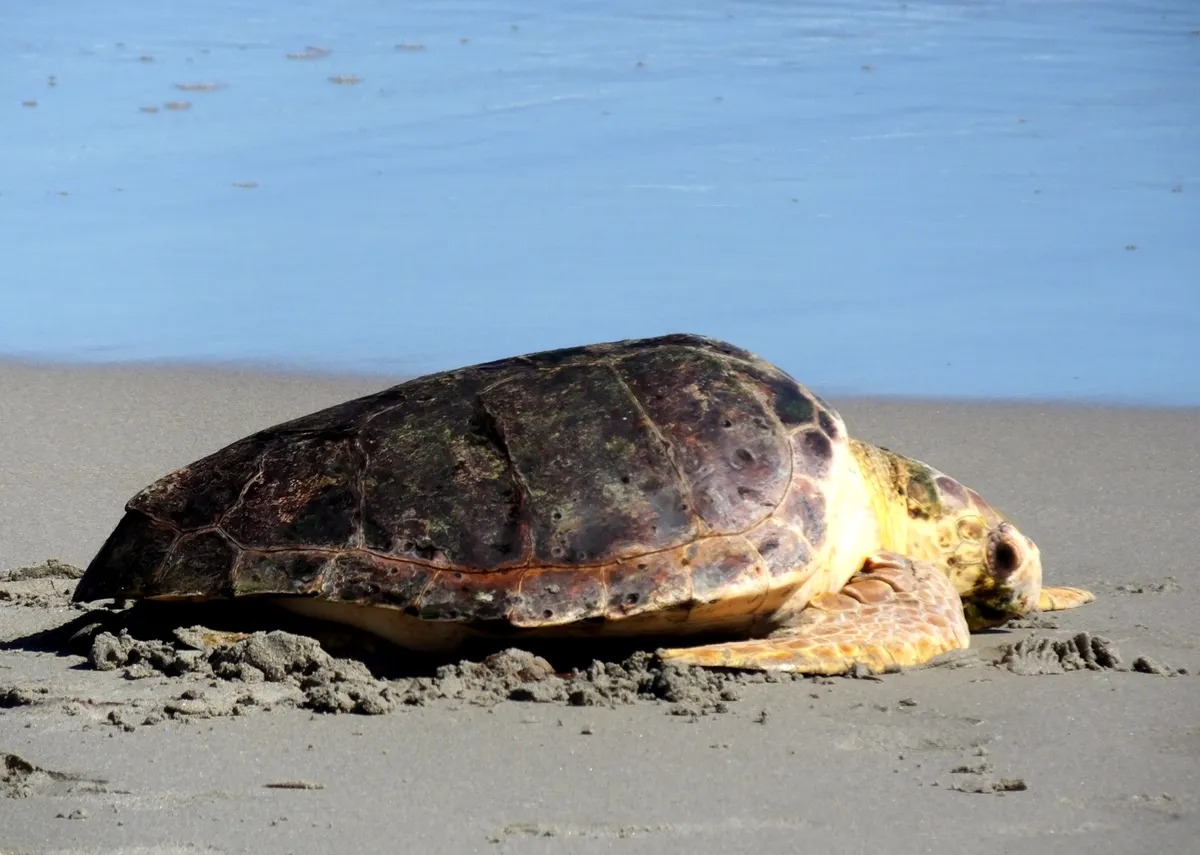
In late January 2022 a young loggerhead turtle – probably the smallest of its kind ever found in the UK – was found alive on a beach on the Scottish island of Iona. The record follows a small run of Kemp’s ridley turtles washed up on beaches, mainly in the aftermath of Storm Arwen, with only one of those discovered alive.
These records are sadly typical, involving young turtles brought here in the Gulf Stream from warm tropical seas. Most are found in the winter months, dead or moribund, unused to our colder waters and suffering from shock, as they cannot regulate their own body temperature.
The leatherback, by far the largest marine turtle, is the exception: it can regulate its body temperature so is able to visit the UK much more regularly to feed on jellyfish. Consequently, there are far more sightings - about 10-20 a year - making it a scarce visitor rather than a true vagrant.
Of the world’s seven marine turtle species, only the flatback turtle from Australasian waters hasn’t occurred here. With more than 250 records to date, the loggerhead is the second most regular species and shows up most years.
A general increase in UK turtle records – involving even those deceased or in poor health – is thought likely to reflect genuine conservation success in their breeding grounds.
The young loggerhead on Iona was taken into care and has been subjected to incremental increases in the temperature of its tank water to raise its body temperature very gradually to avoid thermal shock. In the event of a full recovery, it will hopefully be flown to the Canary Islands.
Long-toed stint (Calidris subminuta)
Location: Yorkshire, England.
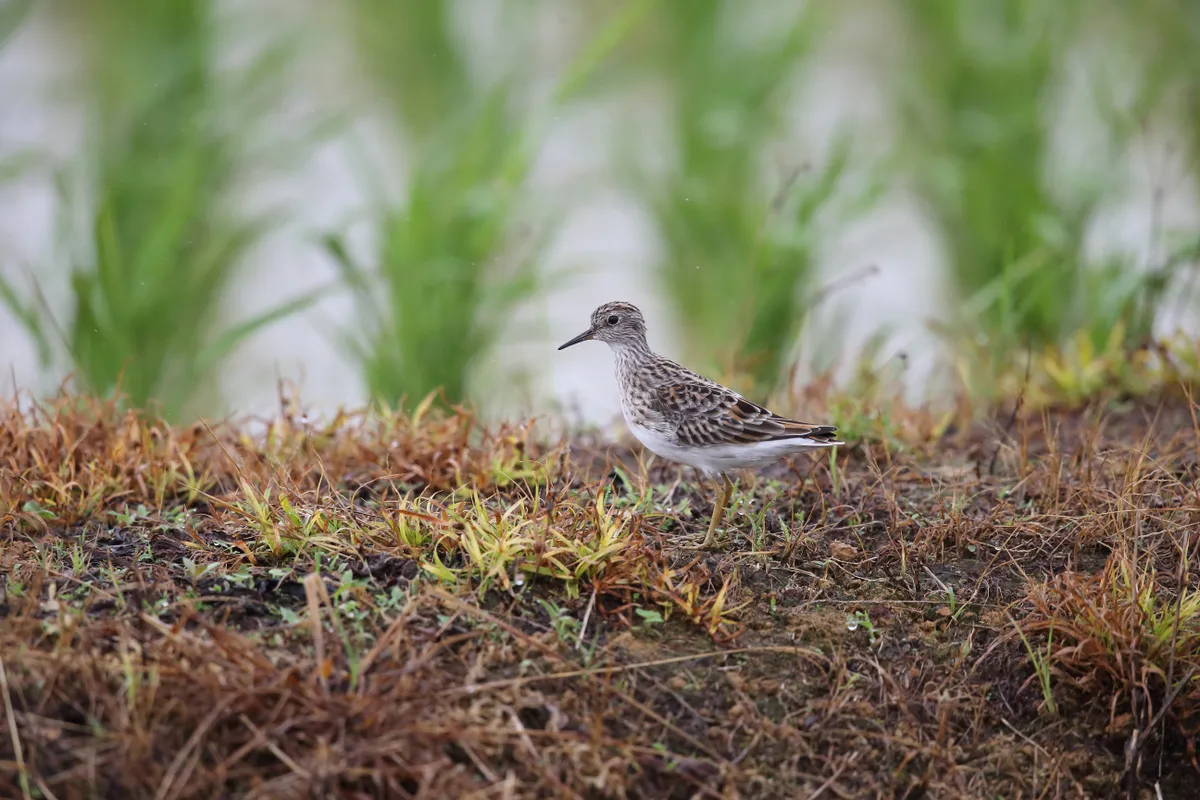
The appearance of a rare vagrant bird in the UK tends to attract a lot of attention, especially among the birding community. Sometimes thousands of ‘twitchers’ will make the trip to the spot where such a bird has turned up (or ‘flock to it’ as almost every press journalist inevitably quips whenever it happens).
Just such an event occurred in October 2021 when a long-toed stint appeared at St Aidan’s RSPB reserve near Leeds. This diminutive, sparrow-sized wading bird breeds across Siberia and winters in South-East Asia and Australia. The species has only been confirmed in the UK twice before: in Cornwall in 1970 and Cleveland in 1982 (another was seen in Ireland in 1996). Needless to say, it was hugely popular during its week-long stay, with thousands of visitors arriving to study its features (which, as the name suggests, include long toes).
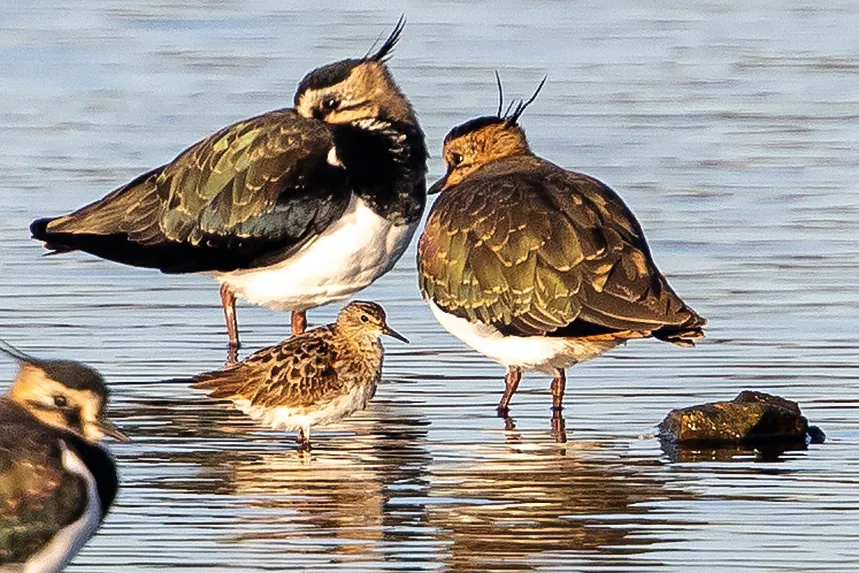
Where the bird went next remains a mystery, though incredibly it seems a second individual (showing juvenile features) was seen a few weeks later in Cumbria. Long-distance vagrancy in birds is not fully understood, but it is expected: thousands of lost Siberian birds arrive in north-west Europe every autumn, especially following periods of favourable weather conditions, such as high-pressure areas dragging in easterly winds from Asia.
Some Siberian species occur here in such numbers that they’re considered merely scarce migrants rather than vagrants and, in a couple of species, entirely new migratory routes, as well as wintering areas in Europe and Africa, have recently been discovered, attributed to such pioneers.
Snowy owl (Bubo scandiacus)
Location: St Kilda, Scotland.

There can be few rare visitors to Britain as recognisable and charismatic as the snowy owl. A species familiar to so many from the Harry Potter films, it has a circumpolar distribution and its reliance on Arctic lemmings, an unpredictable prey species with fluctuating populations, can result in rather nomadic behaviour. Good lemming years can produce snowy owl irruptions further south than usual, particularly in North America.
Fossil records show that during our glaciated past, the species bred in Britain and more recently nested on the Shetland isle of Fetlar for eight years from 1967. Progeny from the single pair hung around for years but no further breeding occurred and the last few resident birds were seen there in the 1980s.
Today, there is likely to be around one to three individuals in Britain and Ireland at large at any one time. They may stay for months or even years and prefer isolated upland areas, with the Northern and Western Isles favoured, as well as the Cairngorm Mountains and the remote archipelago of St Kilda, where a snowy owl called Snedge has been present almost continuously since at least 2018. She feeds almost exclusively on the endemic St Kilda mouse population.
Oleander hawk-moth (Daphnis nerii)
Location: Swindon, England.

Garden light traps for attracting and holding moths have surged in popularity in recent years as enthusiasts realise that the right equipment can reveal a wealth of wildlife on their doorsteps. The number of species that can potentially be caught runs into the thousands and includes plenty of rare migrants from the continent and North Africa. On a warm, muggy night there is every chance of catching something good among the commoner species.
One lucky Wiltshire resident caught this oleander hawkmoth in October 2021 in his garden just outside of Swindon. It ticks the main popularity boxes of big, rare and beautiful, and is consequently something of a holy grail for ‘moth-ers’.
Mainly an African and Asian species, the oleander hawk migrates to Spain and other parts of Southern Europe in the summer, and is almost annual in the UK (there aren’t records for every year), mainly along the south coast, with typically one or two records a year nationally and, very occasionally, low double figures during mini influxes.
There are around 115 records to date but the species is widely kept in captivity with releases and escapees likely to account for a fair proportion of these. The origin of this rather small individual cannot be known for sure but it turned up during optimal weather conditions for moth immigration from Spain and Northwest Africa so can perhaps be given the benefit of the doubt as a likely wild vagrant.
The caterpillars of this species, of which there are no verified reports in the UK, can be found on a number of food plants and are immune to the toxins of the oleander plant that gives the species its name.
Walrus (Odobenus rosmarus)
Location: Tenby, Wales, then Isles of Scilly, England.
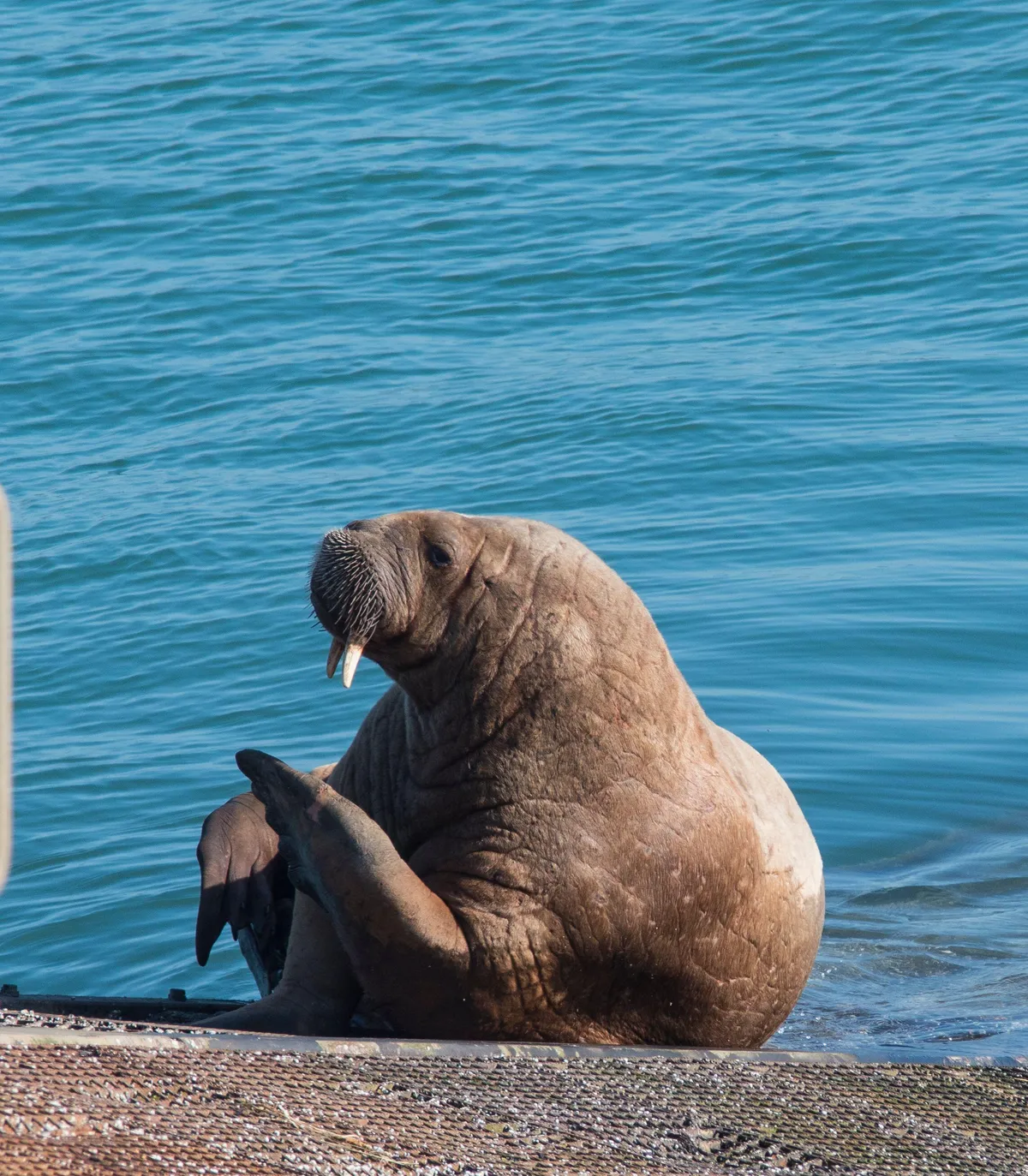
Chances are, you will have heard of 2021’s young celebrity walrus, with the national press covering its every move (and rather irritatingly naming it Wally – the same name likely given to every vagrant walrus in the UK).
The iconic Arctic creature was first spotted in Ireland, before heading to Wales, enjoying a protracted stay of several weeks in Tenby, where it gave the local tourist economy a much-needed post-lockdown boost. But as the souvenir mugs and tea towels were flying off the shelves, the star left his favoured lifeboat slipway and headed to the French Atlantic coast via Cornwall.
He next turned up in northern Spain, before heading back north. Finding the Isles of Scilly to his liking, he was greeted with a similar reception to that in Wales, but his habit of hauling out onto small boats (some of which he capsized) soon landed him in trouble. A local residents’ committee was formed, and meetings held, but a purpose-built pontoon fortunately resolved the issue.
But soon he returned to the Irish coast where a similar situation unfurled, the issues again resolved with a hastily made pontoon. Next stop was Iceland but by then a second lost walrus, this time a female called Freya, had appeared in Germany before making her way over to Shetland. Vagrant walruses in north-west Europe are nothing new, but multiples like this will only fuel the climate emergency debate.
Sei whale (Balaenoptera borealis)
Location: Firth of Forth, Scotland.

Britain and Ireland are both geographically well placed for a range of unusual cetacean sightings – typically deep-water species that have wandered from the whale migration routes running along the continental shelf in the north-east Atlantic.
Several such sightings were made in 2021 from the Firth of Forth, where the star attraction was a sei whale seen over much of the spring and summer after it was first filmed at close range near to the Forth Road Bridge. The third largest whale on the planet, following the blue and the similar, but more regularly seen, fin whale, this poorly studied and globally rare species is also one of the fastest cetaceans.
Sei whales are rare in British waters, particularly near the coast, but may also be under-recorded due to their similarity to the fin whale. The two can be separated by the dorsal fin shape, but this can be difficult to determine at sea.
The Scottish visitor could be surprisingly unpredictable and elusive, to the frustration of many onlookers, some of whom waited days for a sighting. Its conspicuous 3m-high blow allowed it to be tracked distantly from shore at times, but the whale covered a large area, often swimming 2-3km between breaths
and keeping a generally low profile, with no breaching reported and characteristic minimal surface disturbance when feeding.
After spending about four months in the Firth of Forth, the whale – believed to be healthy and well fed – seems to have swum back out and followed the coastline north, with two subsequent sightings made from St Andrews and near Montrose.